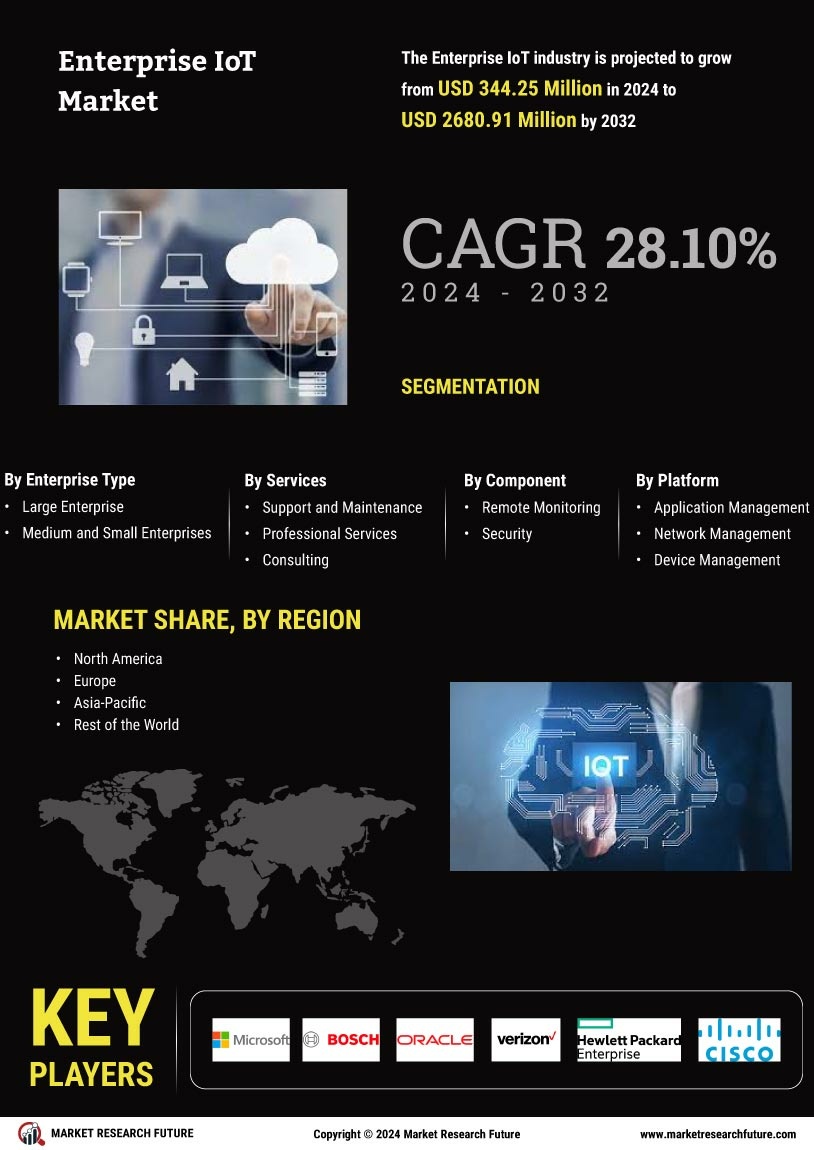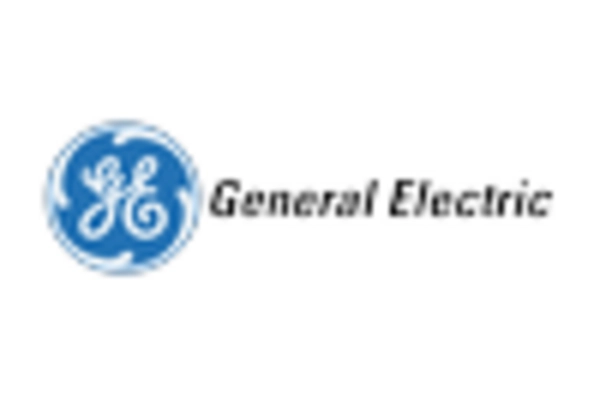Rising Demand for Automation
The Enterprise IoT Market is experiencing a notable surge in demand for automation across various sectors. Organizations are increasingly adopting IoT solutions to streamline operations, enhance productivity, and reduce operational costs. According to recent data, the automation segment within the Enterprise IoT Market is projected to grow at a compound annual growth rate of approximately 25% over the next five years. This growth is driven by the need for real-time data analytics and decision-making capabilities, which IoT devices facilitate. As businesses seek to optimize their processes, the integration of IoT technologies becomes essential, leading to a more interconnected and efficient operational landscape. Consequently, the Enterprise IoT Market is likely to witness a significant transformation as automation becomes a core component of business strategies.
Expansion of Smart Infrastructure
The Enterprise IoT Market is witnessing an expansion in smart infrastructure initiatives, which are reshaping urban environments and industrial settings. Governments and private entities are investing heavily in smart city projects, integrating IoT technologies to improve public services, transportation, and energy management. For instance, the smart infrastructure segment is expected to account for a substantial share of the Enterprise IoT Market, with estimates suggesting it could reach USD 200 billion by 2026. This trend indicates a shift towards more sustainable and efficient urban planning, where IoT devices play a crucial role in monitoring and managing resources. As cities evolve into smart ecosystems, the Enterprise IoT Market is poised for growth, driven by the demand for innovative solutions that enhance quality of life and operational efficiency.
Growing Emphasis on Data Analytics
The Enterprise IoT Market is increasingly characterized by a growing emphasis on data analytics. Organizations are recognizing the value of the vast amounts of data generated by IoT devices and are investing in analytics solutions to derive actionable insights. This trend is reflected in the market, where the data analytics segment is projected to grow at a rate of 30% annually. By harnessing data analytics, businesses can enhance decision-making processes, improve customer experiences, and optimize resource allocation. The integration of advanced analytics tools with IoT technologies enables organizations to monitor performance in real-time and respond proactively to emerging trends. As data becomes a pivotal asset, the Enterprise IoT Market is likely to evolve, with analytics playing a central role in shaping business strategies.
Increased Investment in Cybersecurity
The Enterprise IoT Market is witnessing increased investment in cybersecurity measures as organizations become more aware of the vulnerabilities associated with IoT devices. With the proliferation of connected devices, the risk of cyber threats has escalated, prompting businesses to prioritize security solutions. Recent studies indicate that the cybersecurity segment within the Enterprise IoT Market is expected to grow by over 20% in the coming years. This heightened focus on security is essential for maintaining consumer trust and ensuring the integrity of data transmitted across networks. As organizations implement robust cybersecurity frameworks, the Enterprise IoT Market is likely to see a shift towards more secure and resilient IoT ecosystems, fostering innovation while mitigating risks.
Advancements in Connectivity Technologies
The Enterprise IoT Market is significantly influenced by advancements in connectivity technologies, such as 5G and LPWAN (Low Power Wide Area Network). These technologies enable faster data transmission and improved device connectivity, which are critical for the effective deployment of IoT solutions. The introduction of 5G is expected to revolutionize the Enterprise IoT Market, with projections indicating that it could support up to one million devices per square kilometer. This enhanced connectivity allows for real-time data processing and analytics, which are essential for industries such as manufacturing, healthcare, and logistics. As connectivity continues to evolve, the Enterprise IoT Market is likely to expand, offering new opportunities for businesses to leverage IoT technologies for competitive advantage.

















Leave a Comment